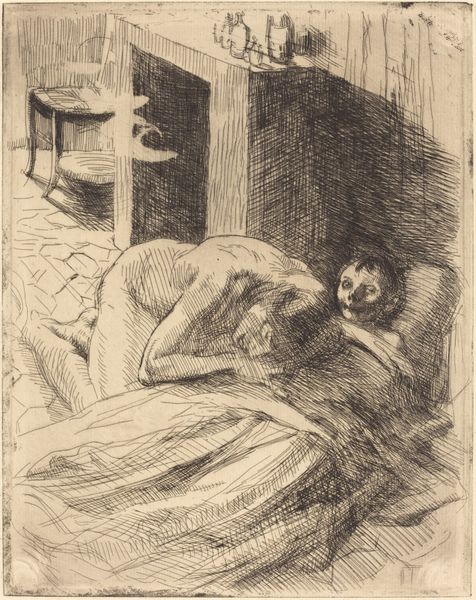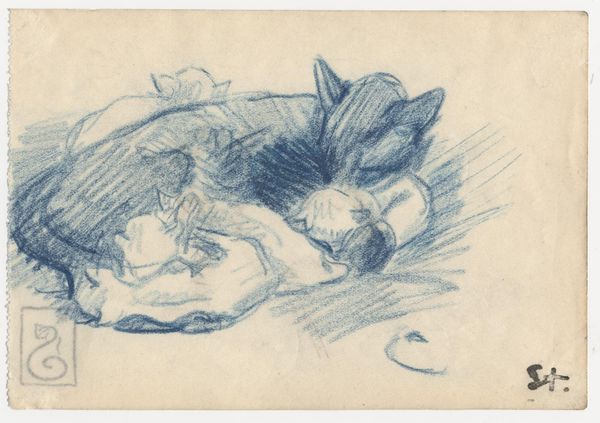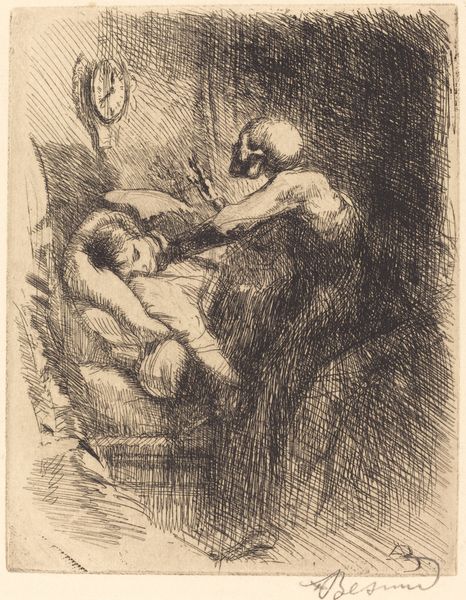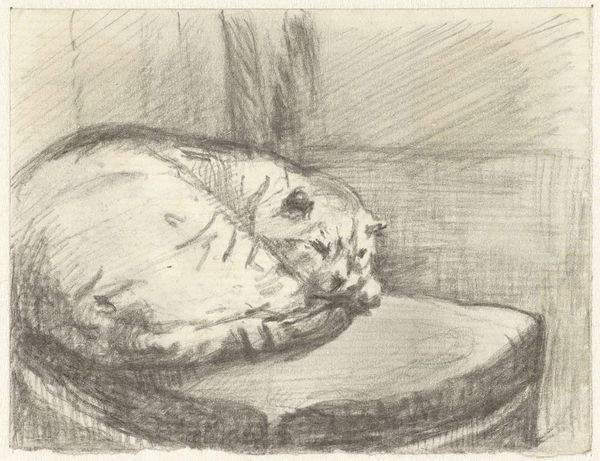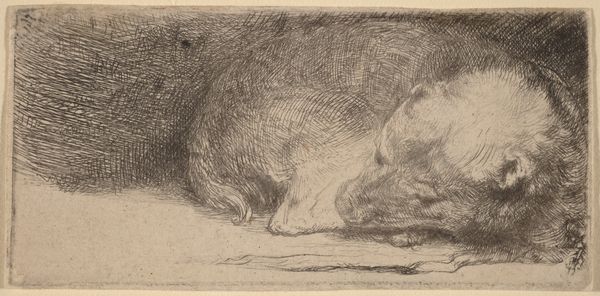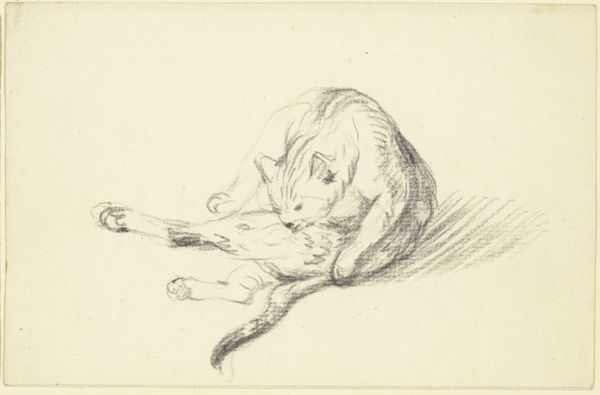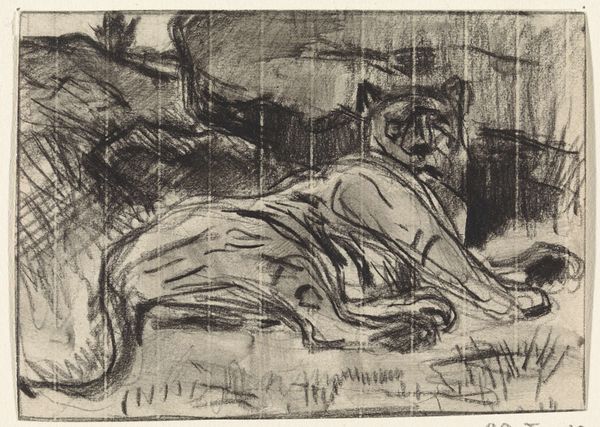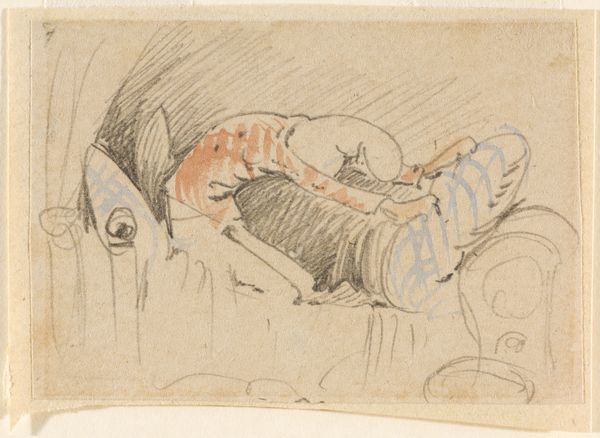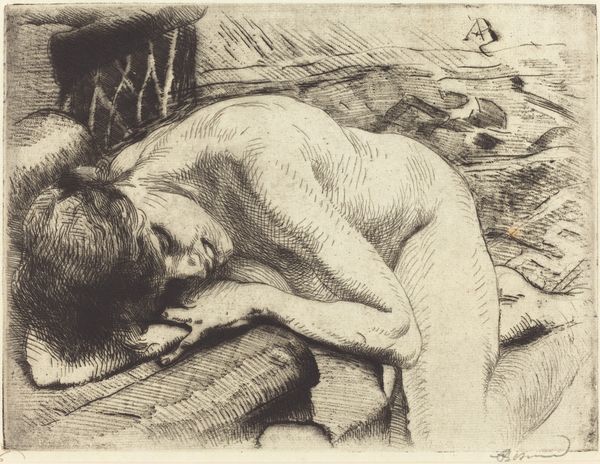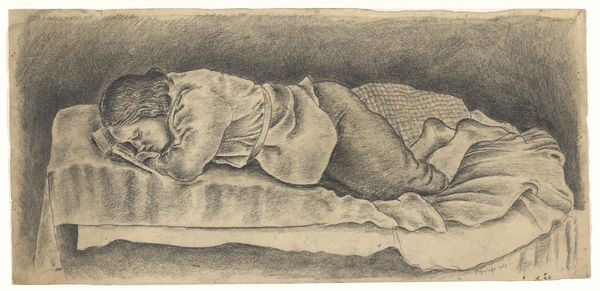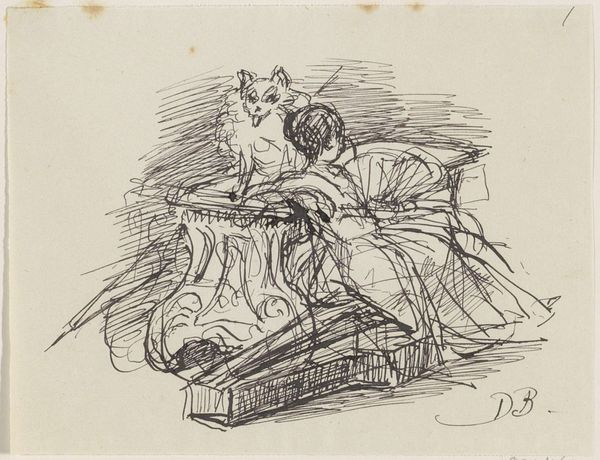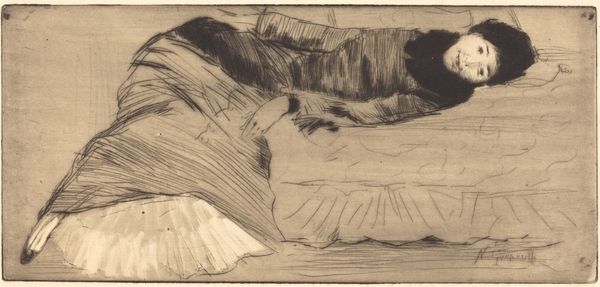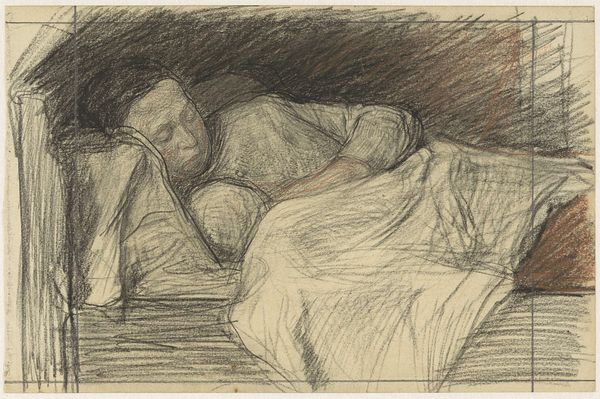
drawing, charcoal
#
portrait
#
drawing
#
charcoal drawing
#
charcoal
#
realism
Copyright: Public domain
Editor: This charcoal drawing is entitled "Mother Cat," by Théophile Alexandre Steinlen. The scene seems peaceful, almost domestic. What catches your eye about this piece? Curator: It's interesting to consider Steinlen’s choice of charcoal. The medium itself lends a certain grittiness. Consider the ready availability and relative inexpensiveness of charcoal compared to oils at the time. What social class might Steinlen have been trying to reach, and what does depicting the quotidian lives of cats suggest about the accessibility of art at the turn of the century? Editor: So, the material itself speaks to a specific audience and purpose? That’s something I hadn’t considered. It makes me wonder about the paper, too. Was it a mass-produced sheet, or something more deliberately chosen? Curator: Precisely. And the apparent haste of the execution – the visible strokes, the unfinished quality – points to a mode of production that values immediacy over polish. This directly challenges academic conventions of the time, where idealized forms meticulously rendered were prized. This cat isn't idealized; it's a working-class cat, drawn with a working-class material. What do you think that says about Steinlen's intent? Editor: That he was intentionally trying to connect to and depict everyday life of normal people? I always thought art was about capturing beauty, but here, it feels like capturing a specific reality and making art accessible. Curator: Exactly. And the choice of subject matter—a domestic cat, a creature present in nearly every home—democratizes the art experience further. It makes us rethink where and how art finds its value and for whom it exists. Editor: I will remember this! Viewing art with an understanding of the materials used really opens up new avenues of understanding. Thank you for this perspective!
Comments
No comments
Be the first to comment and join the conversation on the ultimate creative platform.
